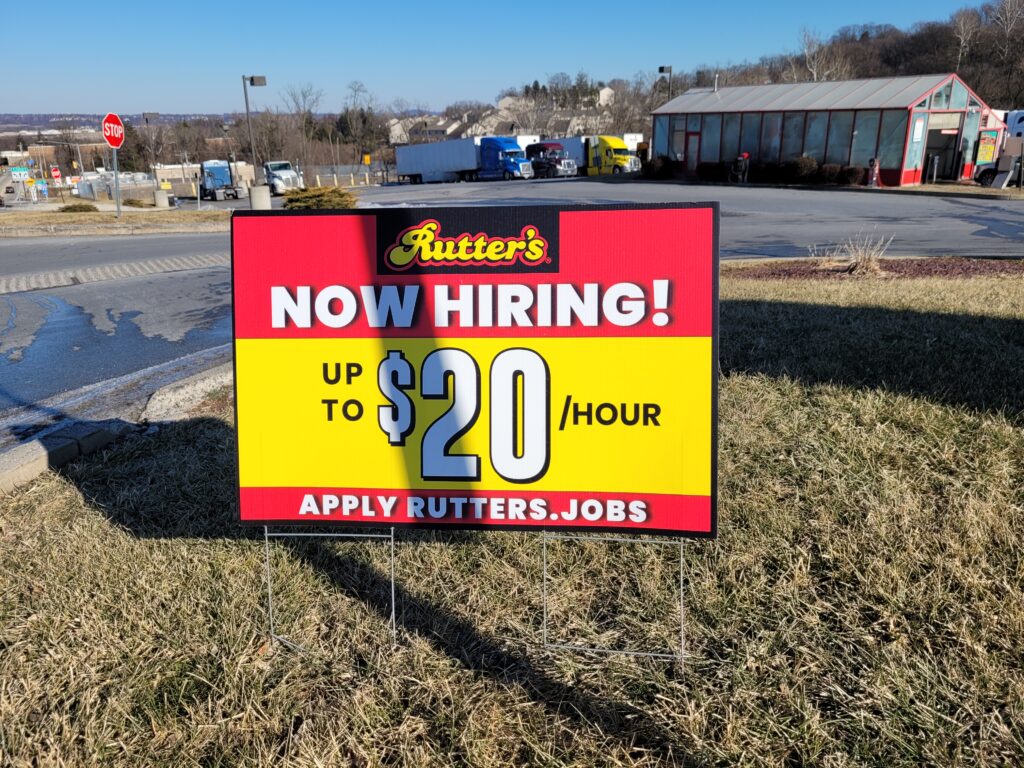Pay and Benefits

This is the final installment of our series on employee Recruiting and Retention for lawn care, tree care, and landscape companies. This blog will discuss pay and benefits for Green Industry companies.
How Much Should You Pay?
The question of pay will vary depending on the market where you live. That’s entirely fair.
I will say that you should be paying more than the local fast-food restaurants or gas stations. You’re asking your team to do more demanding work in various weather conditions. You’re asking them to work a physically demanding job with a high rate of safety occurrences and the potential for injury. (Don’t believe me? In 2016 nearly 60% of all safety occurrences were fatal for arborists, and over 18% of injuries to landscapers were considered “serious” between 2001 and 2017.)
You shouldn’t ask them to do it for less than the local gas station attendant, or fast food worker makes.
I know a landscape company with a massive sign in front of their building that advertised an hourly wage. The problem was a gas station two miles away was promoting an hourly wage of $2.50 more per hour. And then there’s this Tweet from a woman in Michigan, showing that the local Five Guys (fast-food chain) was advertising an aggressive wage. Her post references teachers, but the same can be said for landscapers, lawn care techs, and groundsmen.
Please, please, please – quit saying no one wants to work. They do. They’d just like to get paid more than their friends who are literally flipping burgers.
The Living Wage Calculator
There’s a complex calculation that people need to go through to determine this rate. I’m not going to pretend I’m qualified to work out what is involved with that calculation.
I will say that really, really smart people at the Massachusetts Institute of Technology (MIT) have done that calculation. The Living Wage Calculator tells you what people need to earn in each county in each state to have a decent lifestyle. It is defined as “the wage needed to cover basic family expenses (basic needs budget) plus all relevant taxes.” Not lavish, just living everyday life.
The Living Wage is different from the Poverty Line. The Poverty Line only reflects the cost of food and is pretty much set at a national average. The Living Wage calculator seen here reflects the actual costs of living we all accrue in our day-to-day lives: food, clothing, healthcare, childcare expenses, high-speed internet, cell phone access – you get the idea. You can read the technical methodology here if you are curious. It explains what factors go into the Living Wage calculation.
The last thing I’ll say is this: The Living Wage does not account for “financial means for planning for the future.” That means it’s not factoring in home buying, saving for emergencies, or retirement. No one is getting rich off of this pay scale.
My point is this: if someone can’t pay for food, medicine, housing, clothing for their kids, and occasionally stream a movie, you’re going to have a HECK of a time keeping them. Even the most dedicated, loyal people need to cover the necessities. When you’re constantly worried about finances, it doesn’t matter how much you love your job; you’ll eventually look for something else.

Health Insurance
If you can (that is, if your company is large enough to get a reasonable rate), you should offer your employees health coverage. We already talked about how this can be a hazardous industry. Sometimes, when you do everything right, you still get hurt.
Make it easier for people to work for you by offering them peace of mind. They’ll want to know that both they and their families are covered. Taking a stressor off them is a great way to secure loyalty and prevent employee turnover.
You should also consider offering supplemental insurance. (You know, the kind with a duck for a mascot. Not recommending that specific carrier, but you get the gist.) Allowing someone to purchase extra short-term or long-term disability insurance or additional accidental death and dismemberment insurance also goes a long way toward creating that peace of mind.
Employees are happier and more loyal when they’re not stressed about the “What If’s” related to their health and finances.
Additional Benefits to Consider
You should give serious attention and consideration to the following ideas. They may just be the difference between being fully staffed and hitting your growth goals or having to pass on bids.
Vacation, Sick Days, and Paid Time Off (PTO)
This is critical. If your people can’t take a sick day to keep from infecting the rest of your team with their seasonal cold or flu, your productivity will take a massive hit. If your team can’t take a vacation with their families, your morale will take an enormous hit.
I worked in a place that went through a massive overhaul (in a good way) of the organization. They drilled down to some fantastic Core Values, and they wanted to reinforce those behaviors. They created a panel of current employees and asked for suggestions to encourage this. I was privileged to sit in that group and contribute.
What we arrived at was a nominating process. Coworkers could write a teammate’s name on a slip of paper, share what Core Value they embodied, and tell a brief story about how that person lived up to the ideal. Each month, a nominated team member was selected at random (literally chosen out of those slips of paper) as the “winner.”
At first, they wanted to make it a cash prize. I suggested they offer PTO as an option, too. I told them that people might be more likely to take time off work than a cash prize. Management agreed to it, but some of them openly gave me the “Okay, sure” and a *wink, wink* kind of look. None of them believed people would opt for that.
In the year between when that started, and I left the company, I don’t think a single person ever took the cash. They all opted for the PTO.
The takeaway? You must offer vacation and sick leave if you want to stay competitive in recruiting and retaining employees.
Retirement Options
I have some scope of this, and I know it can be costly. Not every company will be able to offer this. I know the cost can be thousands of dollars each year to maintain these plans.
Consider this: according to a study by Glassdoor, retirement options were just as crucial to employee satisfaction with their benefits package as PTO. That study showed three of the top five factors related to future planning.
You should be offering retirement benefits if you run a landscape, lawn care, or tree care company with more than $3 million in revenue. That’s the only way you’re going to attract and keep great talent.
Profit-Sharing
Everyone has different ideas about profit sharing. But the gist is this: if you hit your profitability goals, you find a way to give that back to your employees. Some ways to do that include bonuses, gifts, or contributions to retirement accounts.
No matter how you decide to do it, this practice helps keep people focused on profitability. When you harp on about your margins throughout the year, it reminds employees that there’s something in it for them. You’re not just going on about it because you want to make more money. You’re going on about it because it helps everyone make more money.
Hiring and Referral Bonuses
The “headhunting” bonus has become pretty ubiquitous in today’s recruiting landscape, but it’s still worth mentioning.
If you have great employees now, why wouldn’t you want their awesome friends working for you, too? Giving them additional incentives to refer people (above and beyond purpose, advancement opportunities, and company culture) will help you build a pipeline of great candidates.
Consider creating a bonus for your employees if someone they refer stays with the company for a predetermined amount of time (three to six months is pretty standard now), as well as a bonus for the new hire if they make it the same length of time.
How large to make that bonus will depend on your market and your current team. I’ve seen these bonuses range from $500 – $3,000 for companies in our industry. As a general rule, if you have a great company culture and respect people’s lives outside of work, they’ll refer many candidates to you.
If your company culture stinks, you’ll have to throw money at your current workforce to make referrals. You’re basically asking them to put a monetary value on their relationships. If they hate working for you, and you’re asking them to bring friends into a miserable working environment, you’re going to have really cough up to get them to burn those bridges.
Conclusion
You’ve got a lot to digest here. It’s a lot to take in, from trying to reconcile the Living Wage in your area to considering options for retirement. But if you want to attract and hire the best talent in your local labor market, these are things you’re going to need to do.
Now, win, put these things in place and start winning your recruiting battles!
Go back and read Part 5: A Plan for Onboarding
Start at the beginning with Part 1: Show Them The Way
Download the FREE Recruiting & Retention Guide – All six blogs condensed to help keep your staffing efforts on track this year!